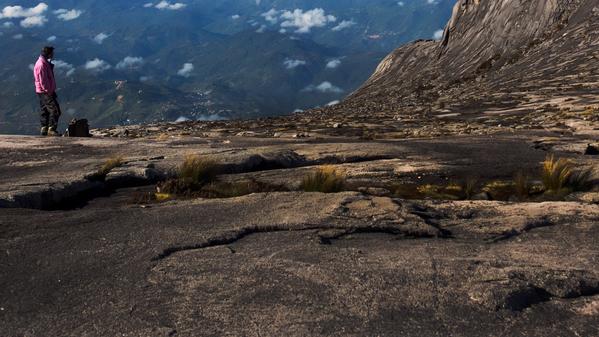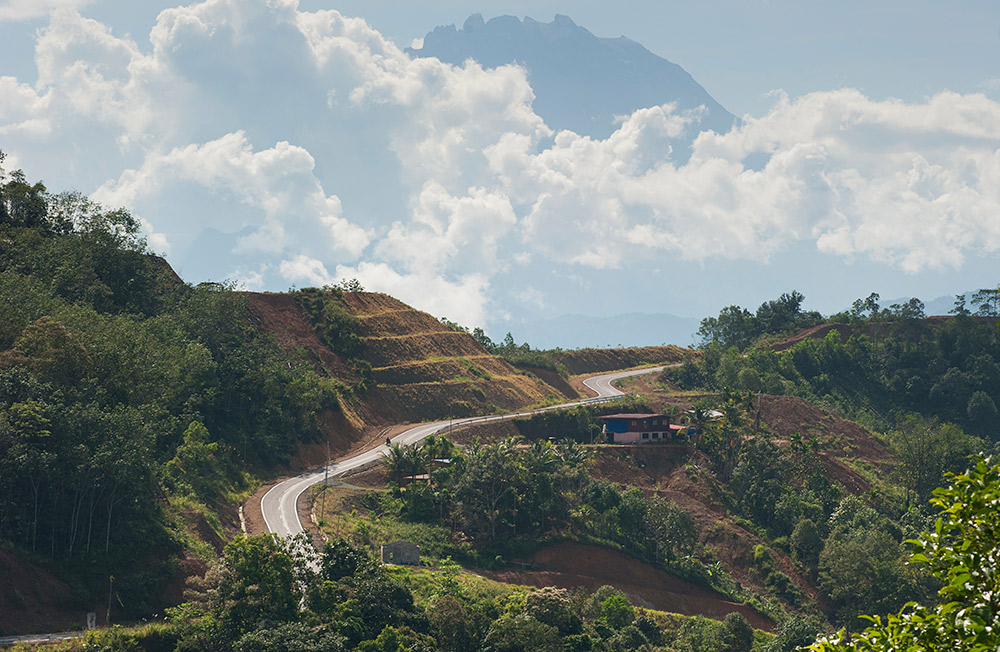
How to survive a Mt Kinabalu climb
Planning a Kimbalu climb? Go at your own pace, wear sturdy footwear, and avoid having nachos for dinner
Shards of first-morning light erupt from the horizon illuminating ashen cloud tops. Dimly lit by the day’s first colouring, the peaks surrounding Mt Kinabalu look like the teeth of a giant saw. A group of weary trekkers face the dawn. Someone comments that the air is thin at the summit, like there is not as much to go around. The climbers rub their feet, stretch against protesting muscles and smile widely as they stand around the mountaintop.
Rising from the lush jungles of Sabah on the island of Borneo, Mt Kinabalu is the highest mountain in the Malay Archipelago and attracts trekkers from around the world who seek to climb a summit mythologized by the indigenous Kadazan people. While a Mt Kinabalu climb is fast becoming a bucket list-must for discerning adventure travellers, it is important that people are properly prepared to ensure they don’t just survive, but thrive on one of Asia’s most famous mountain ascents.

Remember, you’re not Bear Grylls
In all likelihood you cannot build yourself a giant abseiling kit from your body hair if you forget something halfway up the mountain. This means packing the right gear is essential.
As you will be trying to climb Mt Kinabalu prior to dawn on your second day of hiking, you’ll need to come equipped with a headlamp so you have proper visibility of your surrounds. The higher slopes of the mountain have a system of ropes for hikers to pull themselves up with, so a pair of gloves with good grip will come in handy. Proper hiking boots, or sturdy shoes with good grip, are not just recommended for tackling Mt Kinabalu, they are a must. It is also highly recommended that any pair of shoes are broken in prior to making your ascent, unless you want shedding untold layers of skin off your heel to be one of your lasting memories of hiking in Borneo.
Other backpack essentials that will see you comfortably from the lower slopes to the peak of Mt Kinabalu include hiking poles, a large water bottle, a flashlight, sunblock, sunglasses, a hat, an alarm clock and plenty of batteries. Tropical-strength insect repellent is recommended for the lower portion of the mountain, along with a phrasebook for communicating with the locals in Malay, the national language. Prior to Mt Kinabalu even coming into sight on the horizon, you’re not going to get very far in Borneo without your passport, travel insurance, entry visas, vaccinations certificates and travel documents — so not only remember to pack these, but also take photocopies in case you ever get separated from these items.
Get in shape before hitting the slopes
Please note that drinking beer, eating nachos and watching early ’90s cinematic classic Cliffhanger on repeat is in no way considered training for summiting a peak like Mt Kinabalu. While the mountain is an accessible climb for even novice trekkers — and experienced guides and rope systems are available to help complete the ascent — a good level of general fitness is also required. Climbing Mt Kinabalu is often undertaken over two days, with the first day's trekking lasting for anywhere from five to seven hours, until overnight accommodation at Laban Rata (which sits at an elevation of 3,272m or 10,734 ft) is reached. The second day's climb lasts anywhere from three to five hours before the descent begins. So if you're thinking of tackling Mt Kinabalu in the future, do yourself a favour and reach less for the TV remote and more for those running shoes.
Take your time on the way up
On a climb like Mt Kinabalu it is important to ascend at a pace you are comfortable with. Take your time on the way up. The first section of the hike is fairly moderate and it is important to save some energy for the more difficult sections higher up the mountain that will see you ascending far steeper inclines. Make the most out of any rest opportunities and get to bed early on the overnight break. Hikers will be expected to begin trekking up the final sections of the summit pre-dawn, so a late night is not an option.
Be weather aware
Dark skies close in around you. Exposed on a rocky cliff face, fat droplets of rain explode on your skin. Reaching into your hiking pack in search of a rain coat you pull out a leather-bound guide to piano tuning, a half-finished terrarium and a framed photograph of the original cast of Beverly Hills 90210, but nothing that will stop you from looking like you lost an epic water balloon fight.
It can rain on the slopes of Mt Kinabalu. It can rain a lot. Be prepared for this by having a waterproof jacket easily at hand — along with a rainproof cover for your actual pack.
Mt Kinabalu rises some 4,000m (13,123 ft) above sea level and its varying landscape — from the tropical surrounds of the lower slopes to much cooler exposed rocky summit — means the clothes you bring must be able to see you through a wide range of weather patterns. It is important to ensure that light, flexible clothing options are taken: a couple of pairs of shorts, some light shirts (or t-shirts), thermals, a couple of pairs of hiking pants, or loose or comfortable track pants are recommended, along with several pairs of dry socks to change into if you find yourself hiking in the rain.
Hike like you were never there
It is important that you not only survive your ascent of Mt Kinabalu, but that the revered rock in northern Borneo also isn’t impacted on by your journey so its natural beauty is preserved. This means that any waste you accumulate on your climb should be kept and properly disposed of once off the mountain. Everything you take with you should come back with you. Also anything you find on the climb should also stay where you see it. Taking souvenir rocks (or other interesting finds) off the mountain only lessens the environment for future hikers, and will make your pack heavier on the way down!

Relax, recuperate and reflect
The 1980s and shoulder pads, Donald Trump and bad hair, pizza and anything. Some things just go perfectly together. At least that’s what you'll be thinking when you're soaking yourself in the bubbling warmth of the rock pools at Poring Hot Springs, following a successful descent of Mt Kinabalu. A natural hot spring at the base of a hikeable mountain? It's like nature knew what your aching limbs, touch-sensitive feet and sore joints would need post trek, and sought to cater exactly to the needs of the weary. So sit back, relax, recuperate and reflect.
Getting There
Encompassing a wide range of departure dates, G Adventures has a selection of unforgettable tours that take in the best of Borneo and Mt Kinabalu. We can’t wait to show you the wonders of watching the sunrise from the peak of one of Malaysia’s most revered peaks — check out our small group trips for Borneo here.






























